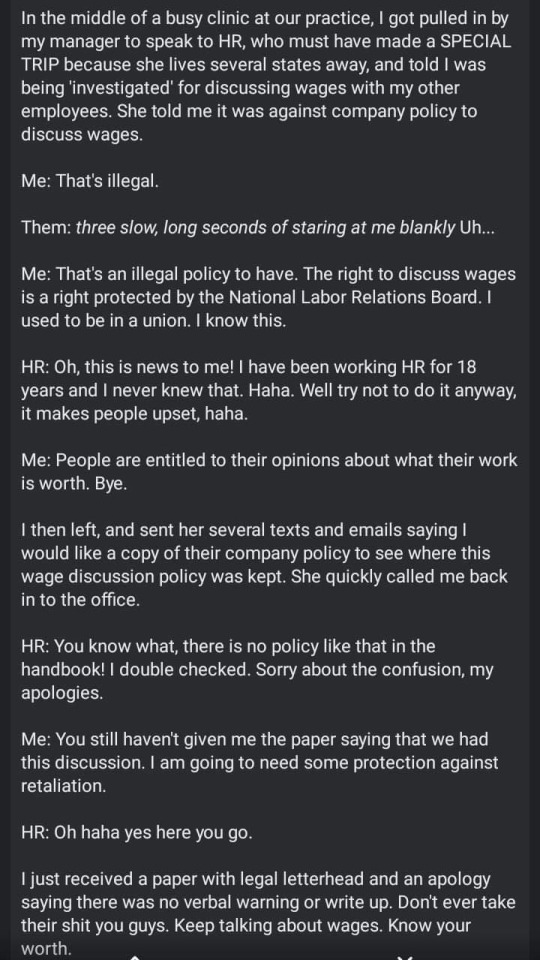Reblog This Post If Your Account Is A Trans Safe Space Or Owned By A Trans Person!
since the old version of this post was flagged for 'adult content'...

reblog this post if your account is a trans safe space or owned by a trans person!

along with that, reblog if your account is a non-binary spectrum safe space or owned by someone on the enby spectrum!
More Posts from Anon-knife and Others
can someone help me find the poem about taking a bug outside, and how “if i were ever somewhere I wasn’t supposed to be, I hope someone would gently usher me outside too” but i KNOW thats not the line pls help

PSA for Ao3 Users:
Be sure to check the URL before clicking on any site to go to Ao3. I noticed today when I searched via Google Chrome that there is a false Ao3 site that comes up as the first result.

It says archiveofour.net
When you go to it, it looks EXACTLY like Ao3, but it is NOT.

When I curiously tapped the search bar, a pop-up opened to direct me elsewhere. I believe this to be a spoof site for the purpose of either phishing or possibly hijacking PCs for mining bitcoin or some other malicious purpose.
I could be wrong. Perhaps it's a proxy site- but the fact that it redirected me to yet another suspicious-looking URL is alarming.
I let a few friends know, but it doesn't appear on every browser. @plague-of-insomnia mentioned using CC and Safari, and it didn't appear for them.
Ya'll be careful, and remember to always check the URL! At first glance, this spoof site is very convincing. If I had been half asleep, I may not have noticed it was different.
Please reblog to make your friends and other fic writers and readers aware!
If you're fifteen or older an still sleep with a stuffed animal please reblog this.
“Those poor boys”

“She deserves to be punished too.”

“I’m not saying I support rape, but-”

“Sorry to say - she deserved it.”

“She put herself in harm’s way”

“But if she was fingered, then that’s not rape.”

“She ruined their lives.”



Fuck fuck fuck fuck fuck google with a 10 feet pole.
Seriously, fuck them. They are breaking the internet BADLY.
Everyone needs to get out of Chrome ASAP. Use duck duck go or any other alternative too.

PSA to all historical fiction/fantasy writers:
A SEAMSTRESS, in a historical sense, is someone whose job is sewing. Just sewing. The main skill involved here is going to be putting the needle into an out of the fabric. They’re usually considered unskilled workers, because everyone can sew, right? (Note: yes, just about everyone could sew historically. And I mean everyone.) They’re usually going to be making either clothes that aren’t fitted (like shirts or shifts or petticoats) or things more along the lines of linens (bedsheets, handkerchiefs, napkins, ect.). Now, a decent number of people would make these things at home, especially in more rural areas, since they don’t take a ton of practice, but they’re also often available ready-made so it’s not an uncommon job. Nowadays it just means someone whose job is to sew things in general, but this was not the case historically. Calling a dressmaker a seamstress would be like asking a portrait painter to paint your house
A DRESSMAKER (or mantua maker before the early 1800s) makes clothing though the skill of draping (which is when you don’t use as many patterns and more drape the fabric over the person’s body to fit it and pin from there (although they did start using more patterns in the early 19th century). They’re usually going to work exclusively for women, since menswear is rarely made through this method (could be different in a fantasy world though). Sometimes you also see them called “gown makers”, especially if they were men (like tailors advertising that that could do both. Mantua-maker was a very feminized term, like seamstress. You wouldn’t really call a man that historically). This is a pretty new trade; it only really sprung up in the later 1600s, when the mantua dress came into fashion (hence the name).
TAILORS make clothing by using the method of patterning: they take measurements and use those measurements to draw out a 2D pattern that is then sewed up into the 3D item of clothing (unlike the dressmakers, who drape the item as a 3D piece of clothing originally). They usually did menswear, but also plenty of pieces of womenswear, especially things made similarly to menswear: riding habits, overcoats, the like. Before the dressmaking trade split off (for very interesting reason I suggest looking into. Basically new fashion required new methods that tailors thought were beneath them), tailors made everyone’s clothes. And also it was not uncommon for them to alter clothes (dressmakers did this too). Staymakers are a sort of subsect of tailors that made corsets or stays (which are made with tailoring methods but most of the time in urban areas a staymaker could find enough work so just do stays, although most tailors could and would make them).
Tailors and dressmakers are both skilled workers. Those aren’t skills that most people could do at home. Fitted things like dresses and jackets and things would probably be made professionally and for the wearer even by the working class (with some exceptions of course). Making all clothes at home didn’t really become a thing until the mid Victorian era.
And then of course there are other trades that involve the skill of sewing, such as millinery (not just hats, historically they did all kinds of women’s accessories), trimming for hatmaking (putting on the hat and and binding and things), glovemaking (self explanatory) and such.
TLDR: seamstress, dressmaker, and tailor are three very different jobs with different skills and levels of prestige. Don’t use them interchangeably and for the love of all that is holy please don’t call someone a seamstress when they’re a dressmaker

Do Not Let HR do this to you. It is not illegal to talk about wages in the work place. I did and got a 12% raise!
I worked with toddlers and pre schoolers for three years. Sometimes I accidentally slip and tell a friend to say bye to an inanimate object (“say bye bus!”) & occasionally they unthinkingly just do it.
-
 b33lateyourhomework reblogged this · 1 week ago
b33lateyourhomework reblogged this · 1 week ago -
 drunkenpie liked this · 2 weeks ago
drunkenpie liked this · 2 weeks ago -
 loafwillow liked this · 2 weeks ago
loafwillow liked this · 2 weeks ago -
 some-brave-apollo reblogged this · 2 weeks ago
some-brave-apollo reblogged this · 2 weeks ago -
 some-brave-apollo liked this · 2 weeks ago
some-brave-apollo liked this · 2 weeks ago -
 aeoli-fly reblogged this · 2 weeks ago
aeoli-fly reblogged this · 2 weeks ago -
 equalzdee liked this · 2 weeks ago
equalzdee liked this · 2 weeks ago -
 sillylilytransfem reblogged this · 2 weeks ago
sillylilytransfem reblogged this · 2 weeks ago -
 herecomesthementalmeltdown reblogged this · 2 weeks ago
herecomesthementalmeltdown reblogged this · 2 weeks ago -
 sincerely-lycanthropy reblogged this · 2 weeks ago
sincerely-lycanthropy reblogged this · 2 weeks ago -
 sincerely-lycanthropy liked this · 2 weeks ago
sincerely-lycanthropy liked this · 2 weeks ago -
 godisdeadiatehim reblogged this · 2 weeks ago
godisdeadiatehim reblogged this · 2 weeks ago -
 godisdeadiatehim liked this · 2 weeks ago
godisdeadiatehim liked this · 2 weeks ago -
 baradurus reblogged this · 2 weeks ago
baradurus reblogged this · 2 weeks ago -
 baradurus liked this · 2 weeks ago
baradurus liked this · 2 weeks ago -
 piratestent reblogged this · 2 weeks ago
piratestent reblogged this · 2 weeks ago -
 jun0-0ne liked this · 2 weeks ago
jun0-0ne liked this · 2 weeks ago -
 furiousblazeconnoisseur liked this · 3 weeks ago
furiousblazeconnoisseur liked this · 3 weeks ago -
 moth-without-toes reblogged this · 3 weeks ago
moth-without-toes reblogged this · 3 weeks ago -
 mayonnaisemoonmoose liked this · 3 weeks ago
mayonnaisemoonmoose liked this · 3 weeks ago -
 lil-gae-disaster liked this · 3 weeks ago
lil-gae-disaster liked this · 3 weeks ago -
 doodle-bug-nightmares reblogged this · 3 weeks ago
doodle-bug-nightmares reblogged this · 3 weeks ago -
 art3i reblogged this · 3 weeks ago
art3i reblogged this · 3 weeks ago -
 art3i liked this · 3 weeks ago
art3i liked this · 3 weeks ago -
 random-weirdo reblogged this · 3 weeks ago
random-weirdo reblogged this · 3 weeks ago -
 random-weirdo liked this · 3 weeks ago
random-weirdo liked this · 3 weeks ago -
 cloveriz liked this · 3 weeks ago
cloveriz liked this · 3 weeks ago -
 urlocalweirdperson1232 reblogged this · 3 weeks ago
urlocalweirdperson1232 reblogged this · 3 weeks ago -
 urlocalweirdperson1232 liked this · 3 weeks ago
urlocalweirdperson1232 liked this · 3 weeks ago -
 et3rnal-dr3am3r reblogged this · 3 weeks ago
et3rnal-dr3am3r reblogged this · 3 weeks ago -
 et3rnal-dr3am3r liked this · 3 weeks ago
et3rnal-dr3am3r liked this · 3 weeks ago -
 bluexjayy reblogged this · 3 weeks ago
bluexjayy reblogged this · 3 weeks ago -
 davismaster01 liked this · 3 weeks ago
davismaster01 liked this · 3 weeks ago -
 parmesatangirl reblogged this · 3 weeks ago
parmesatangirl reblogged this · 3 weeks ago -
 alexbutimhigh reblogged this · 3 weeks ago
alexbutimhigh reblogged this · 3 weeks ago -
 alexbutimhigh liked this · 3 weeks ago
alexbutimhigh liked this · 3 weeks ago -
 mystiqueonfleek007 liked this · 3 weeks ago
mystiqueonfleek007 liked this · 3 weeks ago -
 eden-s-knowledge reblogged this · 3 weeks ago
eden-s-knowledge reblogged this · 3 weeks ago -
 silly-beanbea reblogged this · 3 weeks ago
silly-beanbea reblogged this · 3 weeks ago -
 garlicbreadcake reblogged this · 3 weeks ago
garlicbreadcake reblogged this · 3 weeks ago -
 garlicbreadcake liked this · 3 weeks ago
garlicbreadcake liked this · 3 weeks ago -
 annabattysys reblogged this · 3 weeks ago
annabattysys reblogged this · 3 weeks ago -
 annabattysys liked this · 3 weeks ago
annabattysys liked this · 3 weeks ago -
 domthebomb8567 reblogged this · 3 weeks ago
domthebomb8567 reblogged this · 3 weeks ago -
 sillynoi liked this · 3 weeks ago
sillynoi liked this · 3 weeks ago -
 reginacardsong reblogged this · 3 weeks ago
reginacardsong reblogged this · 3 weeks ago -
 gucci-stinkbug reblogged this · 3 weeks ago
gucci-stinkbug reblogged this · 3 weeks ago -
 goofdog3 liked this · 3 weeks ago
goofdog3 liked this · 3 weeks ago -
 phorrphunn reblogged this · 3 weeks ago
phorrphunn reblogged this · 3 weeks ago -
 phorrphunn liked this · 3 weeks ago
phorrphunn liked this · 3 weeks ago
